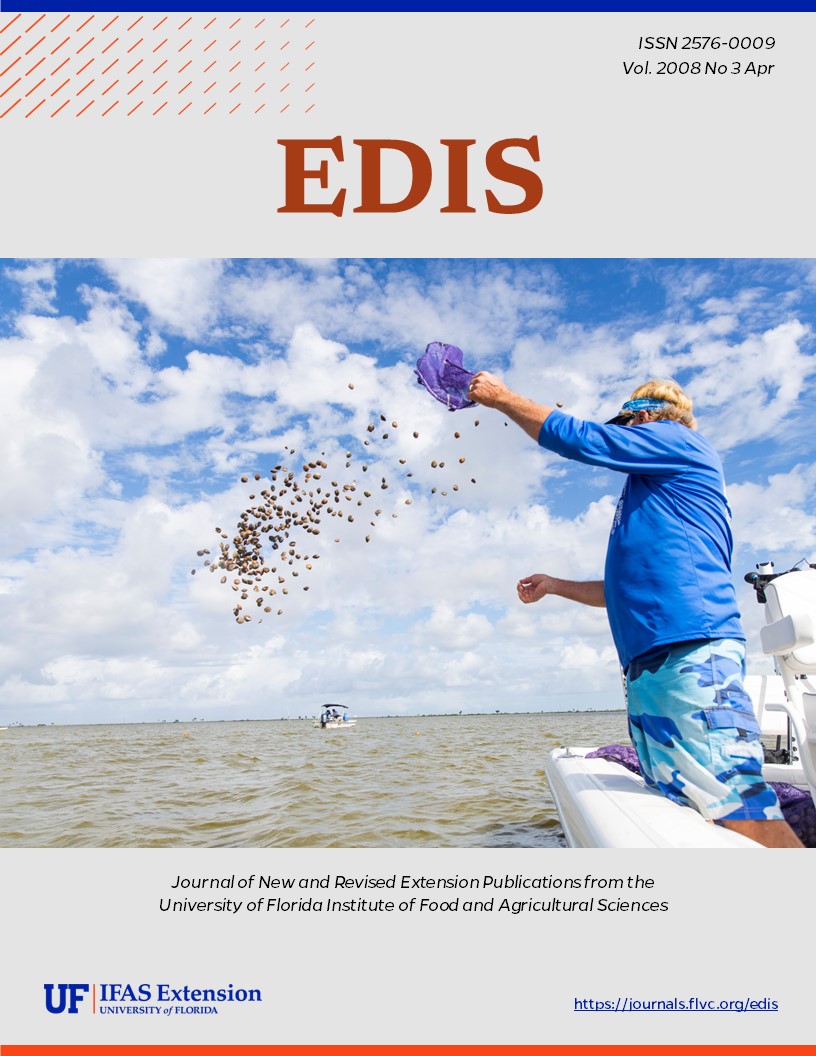Abstract
ENH-1086, a 5-page fact sheet by J. Sharma, A.V. Ogram, and A. Al-Agely, describes the symbiotic relationships between plant roots and fungi and how the resulting rhizosphere activity can lead to transformation and removal of polluting compounds from the soil, reduce the need for fertilizer in commercial nurseries, and improve soil structure and health. Includes references. Published by the UF Department of Environmental Horticulture, November 2007.
References
Al-Agely, A., D.M. Sylvia, and L.Q. Ma. 2005. Mycorrhizae increase arsenic uptake by the hyperaccumulator Chinese brake fern (Pteris vittata L.). Journal of Environmental Quality 34: 2181-2186. https://doi.org/10.2134/jeq2004.0411
Carpio, L.A., F.T. Davies, Jr., and M.A. Arnold. 2003. Effect of commercial arbuscular mycorrhizal fungi on growth, survivability, and subsequent landscape performance of selected container grown nursery crops. Journal of Environmental Horticulture 21: 190-195. https://doi.org/10.24266/0738-2898-21.4.190
Carpio, L. A., F.T. Davies, Jr., M.A. Arnold. 2005. Arbuscular mycorrhizal fungi, organic and inorganic controlled-release fertilizers: Effect on growth and leachate of container-grown Bush Morning Glory [Ipomoea carnea subsp. fistulosa] under high production temperatures. Journal of American Society for Horticultural Sciences 130(1): 131-139. https://doi.org/10.21273/JASHS.130.1.131
Giasson, P., A. Jaouich, S. Gagne, and P. Moutoglis. 2005. Arbuscular mycorrizal fungi involvement in zinc and cadmium speciation change and phytoaccumulation. Remediation 15: 75-81. https://doi.org/10.1002/rem.20044
Khan, A.G., C. Kuek, T.M. Chaudhry, C.S. Khoo, and W.J. Hayes. 2000. Role of plants, mycorrhizae and phytochelators in heavy metal contaminated land remediation. Chemosphere 41: 197-207. https://doi.org/10.1016/S0045-6535(99)00412-9
Leake, J.R. 2007. Mycorrhizas and the terrestrial carbon cycle: roles in global carbon sequestration and plant community composition. Chapter 8 In Fungi in the Environment. Gadd, G.M., S.C. Watkinson, and P.S. Dyer (eds.). pp. 161-184. Cambridge University Press, Cambridge, UK. https://doi.org/10.1017/CBO9780511541797.009
Muchovej, R.M. 2004. Importance of mycorrhizae for agricultural crops. Document SS-AGR-170, Agronomy Department, Florida Cooperative Extension Service, Institute of Food and Agricultural Sciences, University of Florida, Gainesville. http://edis.ifas.ufl.edu/AG116.
Olson, P.E., K.F. Reardon, and E.A.H. Pilon-Smits. 2003. Ecology of rhizosphere bioremediation. Chapter 10 In Phytoremediation: Transformation and control of Contaminants. S.C. McCutcheon and J.L. Schnoor (eds.). pp. 317-353. Wiley-Interscience, John Wiley and Sons, Inc. Hoboken, New Jersey. https://doi.org/10.1002/047127304X.ch10
Perner, H., D. Schwarz, C. Bruns, P. Mader, and E. George. 2006. Effect of arbuscular mycorrhizal colonization and two levels of compost supply on nutrient uptake and flowering of pelargonium plants. Mycorrhiza 17(5): 469-474. https://doi.org/10.1007/s00572-007-0116-7
Smith, S.E. and D.J. Read. 1997. Vesicular-arbuscular mycorrhizas in agriculture and horticulture. Chapter 16 In Mycorrhizal Symbiosis. Second edition. Smith, S.E. and D.J. Read (eds.). pp. 453-69. Academic Press, London, UK. https://doi.org/10.1016/B978-012652840-4/50017-6

